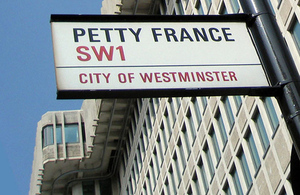Framework for the supply of secure docks to HM Courts & Tribunals Service
SME Voice Products provided an integrated solution for the installation of secure docks in courts.

Case study
Name of company:
Voice Products, Jonathan Carey
Contract title:
Framework for the supply of secure docks to HMCTS
Brief company details:
Voice Products provide audio and recording solutions to businesses. They convert analogue audio feeds into digital recordings which become data and can be integrated into an organisation’s Information Systems (IS). They acquired the joinery business of Bastion Security Installations to provide an integrated solution for the installation of Secure docks in Courts.
Contract summary and highlights:
The Ministry of Justice (MoJ) has traditionally procured secure docks for courts through a main contractor. The decision was taken to introduce a framework which would offer access to a cadre of prequalified suppliers able to meet MoJ’s requirements and deliver best value for money. Feedback received from suppliers at a market engagement day informed our approach to the tender, allowing us to remove potential barriers to SME involvement.
When evaluating bidders, we considered their approach to optimising level of SME participation. Within the competition, the SME suppliers were able to demonstrate considerable expertise in delivering bespoke courtroom furniture. Out of the four suppliers chosen for the framework, two were SMEs.
This new arrangement, while still at the early stages of implementation, will provide MoJ with cost savings, greater flexibility and design innovation.
Did publishing the procurement pipeline result in an increase in SME participation?
Yes. The transparency of the requirement did widen the interest amongst SMEs that had not been involved before with Secure Docks in Courts.
Did pre market engagement occur, and if so what impact did it have on the procurement strategy? Were SME’s involved in the pre market engagement?
Pre-procurement market engagement was held; this provided an opportunity for the MoJ to detail the requirements including the entry criteria. Also, this enabled companies to ask questions regarding the procurement. The effective approach of using a two-way feedback impacted the procurement strategy in the following areas:
- Contract Model: New Engineering Contract short form is preferred over PPC2000.
- Regional approach: National - shopfitters are afforded the ability to go anywhere.
- Amount of time for tendering: This was extended for a period of 5 weeks.
- Long lead items: As a result of glass from Switzerland/Germany.
- Insurance levels: PII was better at £2.5M. Other insurances were ok.
- Minimum turnover: £1.5M would suffice
- Optimum batch size: It was brought to attention that the pallet sizes were not an issue so there was no need to specify.
- Value for money: It has been suggested that competing programmes gives better value for money. However, progression of workload can be seasonal.
Did this sector produce other associated products? Yes, these were custody areas, cell doors, counters. We shaped the contract to consider the potential of additional items.
How did we make the decision on the optimal lot size? Were SME views taken into account?
Very much. The SMEs views on whether to source regionally and whether to compete a programme of works were key messages received and discussed and fed into the procurement strategy.
Were tangible savings delivered as consequence of SME involvement/re view of lot size? If so, please state.
The framework is in its infancy and so no savings realised yet.